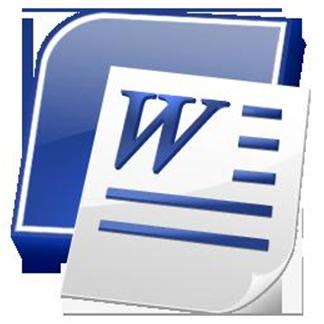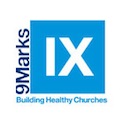
by Bret Capranica | May 23, 2009 | Featured Articles, Ordinary Pastor, Pastoral Ministry, Technology
More on my wrap up of Cheap Technology and the Ordinary Pastor Excel is a tool I regularly use, especially since I oversee our church”™s finances. The ability to quickly create charts and graphs in Word and extensively manipulate them to fit your desired look and express your information as you desire is easy. Word has vastly improved the styles of their charts and graphs, adding more 3D effects and sharper colors and backgrounds. Numbers is the Mac version, and it simply produces a better-looking product than does Excel and is very easy to use. I”™m no Excel power user, but what I do with it was not as easy to accomplish in the OpenOffice platform. Let me say a word about PowerPoint. I used to despise PowerPoint. They have the WORST looking templates. Another area Microsoft just simply does not do well in ““ really professional, modern, crisp, clean, sharp presentations. PowerPoint 07 is a great improvement over previous versions. I do a PPT presentation almost every week that I teach my mid-week class. OpenOffice is a joke. I also extensively tried out the free (and the paid versions) of Sliderocket. Sliderocket has some real potential, but was so buggy that it created some major headaches for me. I also called their customer support for help because once it was out of beta, I couldn”™t seem to get anyone to respond via e-mail. The guy was awesome on the phone and assured me that someone would follow up with my problems ““ I have yet to hear from them. While it still irks me that PowerPoint is so...

by Bret Capranica | Apr 7, 2009 | Ordinary Pastor, Pastoral Ministry, Technology
10 Reasons why an ordinary pastor (or anyone) should consider using Gmail. 1. It’s free. Gmail is a part of the free world of Google. All that is required is an internet connection (not free). Sure several other e-mail services are free. Your workplace gives you a free account, but this one is yours and no paid hosting service is necessary. 2. It’s simple. Anyone can quickly be up to speed with Gmail. No desktop mail software necessary. No account set ups for desktop clients. Just sign up with Google and mail is yours. The learning curve is easy to get up to speed. Even using some of its more advanced features is relatively simple to grasp. The help sections of Google are simple to navigate. Learning to use labels, stars, search, etc., requires little time and effort. 3. Search. This is Google’s bread and butter ““ and in Gmail as well. If your file is large, Outlook is cumbersome and lags when trying to search. I often cannot quickly find what I’m looking for. Gmail search has been simple, accurate, and fast. 4. Spam. I seem to get a lot of spam through Gmail, but I rarely have any of it hit my inbox. Gmail does an outstanding job at catching the spam-far better than Outlook or Yahoo. 5. Accessibility. Since it is browser based, Gmail works with any operating system (PC or Mac). Gmail works on mobile platforms, so that no matter where you are, you have access to your mail and it is always in sync with the multiple platforms you may use (desktop, laptop, mobile,...

by Bret Capranica | Apr 6, 2009 | Featured Articles, Ordinary Pastor, Pastoral Ministry, Technology
Word Processing I’m wiggling out of the Microsoft strangle hold ““ well at least for a month. My goal is to live in the world of the free (or close to free) market of desktop and web apps, looking to see if cheaper, but high quality alternatives exist for the ordinary pastor. Ordinary pastors do not have IT departments at their church. IT budgets are small, perhaps non-existent in the majority of ordinary churches. But, technology is a given and a necessity in the world of today’s ministry. April is my time to test the alternatives. First up: word processing (I’ll include spreadsheets, presentation, and publication software). Microsoft Word (Excel, Power Point) is (are) the standard. Every other program tends to look up to it and pattern themselves after it. A few alternatives exist. I will be using Open Office during my trial (I may look at Zoho). I am impressed with Office 2007. It took me a little while to find all the features since they significantly changed the user interface. But, I’ve adapted and find it helpful and productive. Compared to free, it is quite expensive. Yes, you can get a copy for less than $100.00 (especially if you are a student). Many educational institutions require it. Can the free sources meet the challenge and provide an equally good product for the needs of an ordinary pastor? I find myself typing on a word processor many hours of most days of my week. Writing, taking notes, producing documents for meetings fills my time ““ a word processor is essential. Here’s what I use a word processor for...

by Bret Capranica | Mar 30, 2009 | Featured Articles, Pastoral Ministry, Technology, Time/Life Management
I’m seriously considering leaving the world of Microsoft behind and going for something less expensive, easier to use, and more portable? Does anything out there exist like this? And if I leave my Office 2007 behind, will I be left behind in a whirlwind of little productivity? I really do enjoy using Microsoft Office 2007. It has been a very helpful system for me since the day it came out. They’ve really done a bang-up job on the bells and whistles. I love being able to post blog entries from Word. The visual enhancements to pictures, charts, and graphs are so far beyond previous versions of Office (not near the quality of the Mac world, but then again, few ordinary pastors can afford to live in the Mac world). I’m addicted to Outlook. I’ve never quite understood why people are down on Outlook. It’s been my right hand man for years. Outlook is one of the best organizational tools I have employed in ministry. I could go on. I really enjoy Office. But there is one thing I do not like about it. It is expensive. Whether the Mac version or the PC version, it is simply downright expensive. Until recently, Microsoft had us right where they wanted us. There were no other truly inexpensive options. True, Word Perfect was out there, but then again, you were stuck in the Corel Corral and could not interact with the rest of the world who was using and sharing Word docs. That may not be so now. Google is hot on their trail. Calendar is excellent and now boasts of offline...

by Bret Capranica | Mar 3, 2009 | Technology, Time/Life Management
I’ve been a Microsoft Office 2007 user since the day it came out. I really like it. It took me a few weeks to adjust to the new “ribbon” in MS Word, but I think I am more proficient and productive with it now than I was with previous versions of Word. I love the new Smart Art capabilities as well as the abilities to enhance pictures I use in documents and presentations. It is very easy to create better looking and functioning documents and presentation in Office 07. I also use Word 2007 to compose and publish blog posts to THE CAPRANICA, with its “Post” feature. Having said that, I’ve been miffed with the new default format for Word 2007 documents. I don’t mind the new font, Calibri. It is clean and readable. However, for my formal writing, I must use Times New Roman. For a host of other programs (i.e., Bible Software), everything is set to the default TNR font. Who wants to waste time changing all the fonts in every program? I don’t like the default 11 point font. Twelve is the normal and best size for most everything I do. Furthermore, I detest the default 10 points Word 07 puts after each new paragraph. I have to start every new document by changing the font, size, and paragraph formatting. I knew there must have been an easy way to change the default, but I could never seem to get my new settings to stick. Then I read Alfred Poor’s article “Customize Microsoft Word 2007 for Maximum Efficiency,” in PC World. Hallelujah! (I am easily pleased)....












